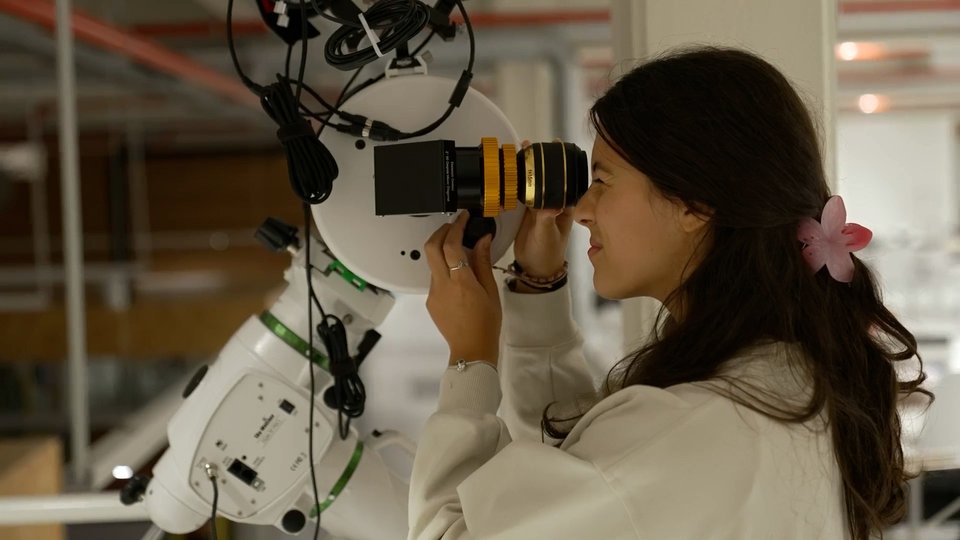Mertxe de Renobales: “The blackest point of biotechnology is the problem of intellectual property”
How would you define biotechnology?

Biotechnology encompasses many technologies. From a general point of view it can be said that it is about using life processes to obtain products and services. What interests us today is genetic engineering or recombinant DNA technology.
What are the benefits of biotechnology for agriculture?
Genetic engineering has allowed us to develop transgenic plants. Without this it would have been impossible, for example, to develop plants (Bt) that generate their own insecticide. According to the UN human development report, these plants reduce the use of insecticides. For example, in the United States, in 1999, 32% of cotton plantations planted the Bt cotton plant, which meant a reduction of 1,350 tons of insecticides and an increase in production of 130,000 tons. This reduces the impact on the environment and indirectly reduces the applications of these products, reducing the use of fuels and CO 2 emissions.
Finally, biotechnology has allowed the development of plants in both acidic (40% of cultivable soils are acidic) and basic (more than 25%) soils.
According to some experts, GM plants are a way to solve the problem of hunger. What do you think?
In the world, today, there are 800 million people who do not have enough or enough food. And another 1.2 billion people have less than a dollar a day. The problem of hunger is very complex and there are political, socio-economic and technical parties: the problem of distribution, affordable prices for those who need it, the ability to produce food where it is needed…
The FAO report forecasts that by 2050 there will be 9 billion inhabitants worldwide, of which 7 billion will be inhabitants of the Third World. Therefore, increased production is essential, especially in those countries where food is insufficient.
If crop productivity is the same as in 1997 by 2050, it will take an additional 1.6 billion hectares to grow (roughly twice as current), which will require massive deforestation. From a scientific and technical point of view, transgenic plants can help solve this situation. Well I say they can help, because we don't have to lose sight of the only option.
Develop local varieties of higher productivity and pest resistant plants. Currently, only 26% of Sub-Saharan African lands cultivate high productivity sorghum varieties, and 70-80% of the robe is lost by viruses. In South America, as in Bolivia, 50% of the potato is destroyed by nematodes. Biotechnology prevents this. On the other hand, plants that adapt to acidic or alkaline soils will increase productivity.
For this to be so, the knowledge of laboratories should be in the hands of all. Right now, isn't it?
The high percentage of transgenic technology is in the hands of few international companies. The problem of intellectual property related to agriculture and food production has been denounced by the United Nations (Human Development Report 2001), FAO, the Nuffield Foundation, the National Academy of Sciences of the United States, Brazil, China, India, Mexico and the United Kingdom.

All these institutions have advised the design of an intellectual property system that promotes research and, at the same time, contributes to the dissemination of products of great social benefit. Public investment in the development of high productivity varieties must also be increased, and developed countries must intervene in the training of third world scientists.
Are transgenic products used in other areas?
Yes, transgenic products are also used in other areas. For example, many pharmacy products are made from GMOs such as insulin.
On the other hand, transgenic laboratory animals are used to investigate certain diseases or define the function of certain genes.
Some industrial products are also transgenic, such as enzymes used in the washing machine soap industry and enzymes used in food processing. Many microorganisms used in the recovery of contaminated soil or water are also transgenic.
Has biotechnology hurt agriculture and the environment?
Like all technologies, this has its good side and not so good. I think the problem of intellectual property is the blackest point. There are also environmental aspects, but more data is needed to draw conclusions. For example, the gene flow between cultivated crops and sexually compatible wild plants has been studied in very few cases and only debate has begun on the possible influence of this possible gene flow on the original crop.
The European Union has a comprehensive research programme on the safety of genetically modified organisms. However, the lack of thorough knowledge about these aspects is not synonymous with risk. It is important to act very cautiously, but without stopping fear. Once the risk analysis and quantification have been carried out, for which data are required, procedures for correct management may be defined.
Biotechnology has no turn?

Given the help GM plants can offer to solve problems, biotechnology should not be ruled out. As a citizen, I think you have to put rules and protocols for good management. The interests of all stakeholders must be taken into account, not only of the economic groups behind development, but also of farmers (especially smallholders) and consumers in developed and undeveloped countries. At this point there may be many legitimate opinions; the Western consumer may be more concerned about allergy issues, but in oblivion, those in the Third World may be interested in increasing productivity.
But where is consumer health?
With regard to human health, GM crops sold so far and foods made from their ingredients have not generated health problems. GM crops, before commercialization, filter controls that do not support improved crops with conventional methods, and are accepted individually, never by groups (for example, all Bt corn). Keep in mind that zero risk does not exist and know that if we applied the same controls and strict criteria to supermarket products or pharmacies, the shelves would be half empty. Of course, we also need to continue researching allergy issues in order to learn more about some aspects.
Buletina
Bidali zure helbide elektronikoa eta jaso asteroko buletina zure sarrera-ontzian











